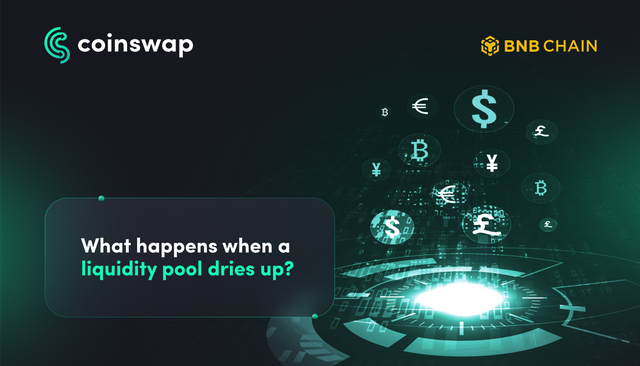
In the vast ocean of decentralized finance (DeFi), liquidity pools stand as the pillars that support the surging waves of transactions. Imagine these pools as the beating heart, circulating assets and enabling seamless exchanges. But what happens when this liquidity dries up, leaving the once-active pools barren? Let's embark on a journey to explore the significance of liquidity pools and the potential consequences of their depletion.
Understanding Liquidity Pools 🔄💰
Liquidity pools are foundational elements of decentralized exchanges (DEXs), providing a space for users to trade various cryptocurrency pairs without the need for traditional intermediaries. These pools consist of locked-in assets, with users depositing their tokens into a smart contract. In return, they receive liquidity provider (LP) tokens, representing their stake in the pool.
The mechanism operates on the principle of automated market makers (AMMs), where prices are determined by a mathematical formula based on the ratio of assets in the pool. This setup ensures continuous liquidity availability for traders, fostering a vibrant and active trading environment.
The Ecosystem in Harmony 🌐🔄
Liquidity pools play a vital role in maintaining stability within the DeFi ecosystem. Traders can execute transactions with minimal slippage, and the constant flow of liquidity encourages market participation. As a result, DeFi projects can thrive, attracting users and capital to their platforms.
The Perils of Drying Pools 🏜️💔
Now, let's envision a scenario where the liquidity in these pools begins to evaporate. As users withdraw their assets, the pool becomes shallower, leading to increased slippage. This domino effect triggers a chain of events that can disrupt the delicate balance within the DeFi ecosystem.
Increased Transaction Costs 📈💸: With lower liquidity, traders face higher transaction costs due to heightened slippage. This can discourage participation, reducing overall market activity.
Volatility Surge 🌪️📉: A drying liquidity pool amplifies price volatility, as even relatively small trades can cause significant price swings. This heightened volatility may make the market less attractive to both traders and investors.
Project Vulnerability 🎯🚨: DeFi projects relying on these pools may experience heightened vulnerability. A lack of liquidity could lead to a rapid devaluation of their native tokens, potentially jeopardizing the project's sustainability.
Risk of Impermanent Loss 📉💔: Liquidity providers may face impermanent loss, a situation where the value of their holdings in the liquidity pool is lower than if they had simply held the tokens. This risk can further discourage users from participating in liquidity provision.
Conclusion: Balancing the Tides 🔄🌊
In the dynamic world of DeFi, the health of liquidity pools is paramount. The risks associated with drying pools underscore the need for continuous innovation and strategies to incentivize liquidity providers. As we sail through these uncharted waters, adapting to the ebb and flow of liquidity is crucial for the sustainable growth of decentralized finance. 🚢🚀